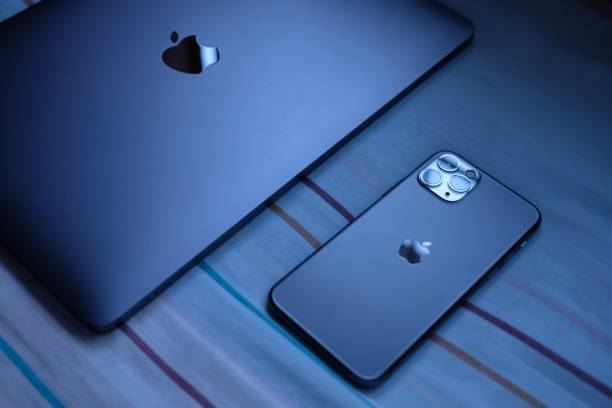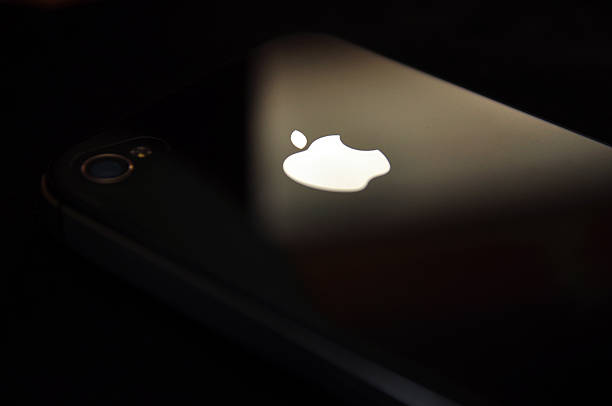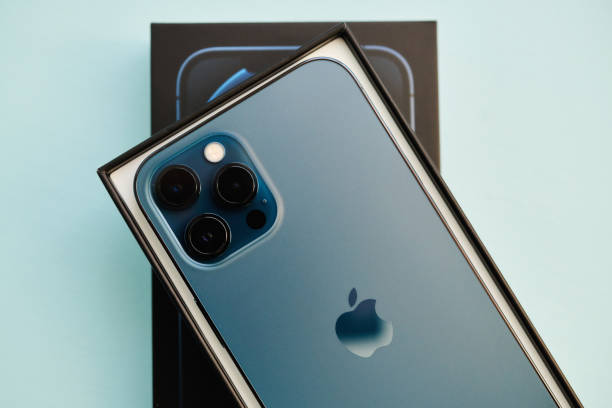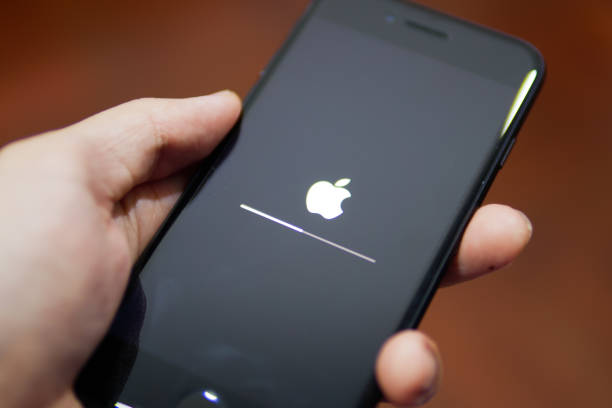
Trang,Thailand. October 24, 2019 : Customer lay down new macbook pro 2019 and iphone 11 pro are space grey colors on bed after receive from the apple store
As Apple’s flagship product, the iPhone has become one of the world’s most popular mobile phone devices. During the fourth quarter of 2022, the Apple iPhone had its highest global market share, 37.5 percent.
This article will discuss the iPhone’s market share in different regions and the factors that have contributed to its success.
Overview of the iPhone’s market share
Since its introduction in 2007, the iPhone has been one of Apple Inc.’s most profitable products. The smartphone has become a ubiquitous device, with millions of users across the world owning one or even more iPhones.
The iPhone’s market share varies greatly from region to region due to different factors such as pricing, pre-released offers, availability and customer perception in each respective country or area. According to data reported by Counterpoint Research, Asia – Pacific recorded a 41% market share followed by North America with 21%, Europe (19%) Latin America (12%) and MEA (7%).
To understand how these numbers are affected by price, the report divided the sales by price range. It revealed that Apple has taken a major share of mid-tier and premium phones in all regions but Latin America where budget models continue to dominate the market.
It is estimated that nearly half of the worldwide iPhone sales come from Asia – Pacific region with China being at its center as Apple becomes increasingly popular due to its strong redesign on operating systems like iOS 11 and consistent expansion into emerging markets such as India.
On the other hand, European countries employ different user preferences for their mobile device, giving way for other opportunities for Android handset makers who can customize their product for distinct local markets.
Overall, it is clear that Apple has established itself as a household name across many countries, allowing them to gain a strong foothold before competitors come in.

Global Market Share
The Apple iPhone has been a global leader in the smartphone market since its first release in 2007. During the fourth quarter of 2022, its global market share was the largest ever reported.
This article delves into the different regions to closely examine the iPhone’s market share since its inception. We will discuss the regions where the iPhone has the largest market share and where it has seen its biggest growth.
North America
In North America, the iPhone has maintained its position as the most popular smartphone since its inception in 2007. According to eMarketer, iPhone accounted for 46.8% of North America’s total mobile phone market share in 2019, followed closely by Android devices at 44.1%. This reflects the globally high demand for Apple products in this region.
Apple’s market share of overall mobile sales (smartphones and feature phones) slightly dropped to 43.3% in 2020 from 45.7% the year before due to growing competition from Android devices in this region. Still, with a combined market share of over 30%, iPhones continue to dominate smartphone sales across North America compared to other smartphone operating systems such as Windows Phone and Blackberry OS which together account for less than 5% of total mobile phone sales in this region based on 2020 data from Canalys and Gartner Global Reports.
Europe
Europe is the second largest market for the iPhone with a market share of 17.4%. This includes countries in North and South America, such as France, Germany and Italy. In 2018, Apple reported record sales in Europe, highlighting which regions drive growth. For example, the iPhone was 10% of all phones sold in France during the fourth quarter. Other countries with significant market share in Europe are the United Kingdom (16.7%), Spain (15%), Germany (14%) and Italy (13%).
In Europe, there has been strong growth for both Apple’s high-end models and their mid-range devices. Since 2017, Apple has posted double-digit revenue growth in Europe yearly. Higher prices largely drive this on the iPhone XR released in late 2018.
Asia
The iPhone has succeeded in Asia, making up over 25% of the region’s smartphone market share. According to a 2019 report from Canalys, Apple dominated these markets and shipped an estimated 75 million iPhones during the first quarter of 2019. China was the biggest contributor to this success, accounting for 40 million units. South Korea (14 million units,) Japan (9 million units) and India (7 million units) followed as the three other countries with the highest shipment figures in that quarter.
Apple’s performance in India has been particularly impressive. Despite competitive pressure from Chinese brands such as Xiaomi and Vivo, iPhones remain among the most sought-after phones in large cities like Mumbai and New Delhi. As a result, India’s brand’s market share stood at 11% in 2018, up from 8% the year before.
Moreover, Apple’s devices remain popular throughout much of Southeast Asia due to their reputation for reliability and build quality and their status as status symbols among high-income consumers. For example, in Indonesia, one of Malaysia’s largest luxury goods markets, iPhones accounted for 21% of total smartphone shipments in 2018.
South America
The iPhone has a strong presence across South America, largely due to its popularity in Brazil. According to Statista data from 2016, the iPhone had 34.7 percent of Brazil’s total smartphone market share. In Argentina, the iPhone user base is even larger with 50.9 percent of the market share in 2016. Colombia and Chile also have a significant user base for iPhones.
However, Samsung still reigns supreme in Venezuela with 53.9 percent of total smartphone users having a Samsung device by their side in 2016. Additionally, iPhones are expected to continue gaining traction in Latin America as more people come online and purchase their first smartphones over the next few years.
Africa
Apple’s market share across Africa is estimated to be around three percent. This number, however, is expected to increase due to new iPhones coming out as many Africans are looking for quality products.
The iPhone’s market share in different African countries has varied, ranging from as high as 34% in communities such as Nigeria and Morocco, to less than a percent in Ethiopia and Guinea.
In Algeria, the iPhone has seen an increase of usage year over year, going from 6.1% market share in 2019 to 10.9% by 2020. The trend appears to be similar across most other countries in Africa with Tunisia showing a significant market shift toward the Apple brand this past year followed by Ghana (5%), South Africa (4%), Kenya (3%) and Zambia (2%).
The availability of cheaper Chinese phones might challenge Apple due to cost efficiency. Still, despite that challenge, Africans are increasingly favoring Apple when presented with the option alongside competing brands such Android devices from Huawei or Xiaomi. The smartphone manufacturer aims to consolidate its presence in the African market by launching more quality products in regions such as North Africa where it already enjoys high numbers penetration rate with 23%.

Factors Influencing Market Share
Apple’s iPhone has seen a large market share globally, but the market share in different regions can vary greatly. Many factors influence market share and understanding these factors can help us understand why the iPhone has had its largest global market share of all time during Q4 2022.
Let’s take a closer look at the factors that influence market share.
Cost of the iPhone
The cost of the iPhone is a major factor influencing its market share across different regions, as price affects how desirable the device is. The higher the cost of an iPhone, the more difficult it is for potential users to access and purchase the device. This is why Apple has tried to make their devices more affordable over time by introducing new, cheaper models such as the iPhone SE and restructuring their pricing tiers. Additionally, variations in currency exchange rates could influence regional purchasing power relative to other countries where iPhones are available and cause regional fluctuations in pricing or affordability.
Another factor related to cost that can affect market share is availability of payment plans for purchasing iPhones and factors like subsidization from carriers. In several regions worldwide, iPhones are sold through wireless carrier stores that offer financing plans for larger purchases, which can be attractive for consumers who may not have enough money to purchase an iPhone outright. Additionally, some carriers offer pricing subsidies if a customer signs up for a long-term contract or data plan, making it less expensive than if they purchased directly from Apple without a contract.
Finally, taxes on iPhones can affect prices in different countries and regions. In addition, the level of taxation can depend on policies in place in each country which further influences how accessible an iPhone may be in any one region compared to others worldwide.
Availability of iPhones
The availability of iPhones in different regions worldwide has a noticeable influence on their market share. Apple’s classic strategy is to start with one or two main markets such as the United States and then gradually move into new, lucrative markets like India and other parts of Asia.
As more countries gain access to the iPhone, consumer demand increases steadily. In addition, Apple’s decision to focus its efforts on certain, limited markets ensures that demand does not exceed supply, contributing positively to their market share in those regions.
Another factor affecting availability is legislation regarding tariffs or tax laws – these can often put people off buying an iPhone due to a sharp increase in its price due to additional charges upon importing the phone into a certain country. Again, this can impact the market share due to people either choosing not to buy or not being able to afford it due to increased costs.
Currency fluctuations can also affect iPhone sales due to its global presence. For example, fluctuations between different currencies can sometimes make iPhones cheaper in different countries when compared with other currency exchange rates – this would cause an influx of sales of iPhones in those markets and could increase its market share there as well.
Advertising and Promotion
Various factors, including advertising and promotion influence the iPhone’s market share. The success of a product depends on the ability to reach potential customers with adequate branding and marketing messages. Apple products have always been associated with immersive marketing campaigns. In addition, the company’s widespread appeal has enabled it to successfully promote its products even in regions with relatively little presence.
Advertising is an essential tool for the iPhone, one that not only involves traditional methods such as television commercials and includes sponsorships, public relations (including influencers), promotions and even grassroots marketing measures. Some of the major components include unique slogans (such as “Think Different” or “You’re more powerful than you think” in Apple’s recent campaigns) as well as strong visual elements, which often incorporate silhouettes of dark-haired men looking determinedly out at the viewer or videos showing people using iPhones to prodigious effect.
Everything from Apple’s retail store placement to billboards can be included in their promotion campaigns. In addition, apple frequently uses television commercials or other media advertising to stay on top of consumer demands. This is why Apple’s promotion activities often target different markets at different times to maximize their influence while staying relevant to potential customers’ needs. Ultimately, these activities have enabled the company to become one of the world’s most recognizable brands today and undoubtedly helped drive it towards record-breaking sales figures for its iPhones in various regions over time.
Competition
The level of competition for a business will affect its market share. For example, introducing a new competitor in the market can drastically alter the sales of existing companies. In addition, if one business has far more resources or greater brand recognition than their opponents, they are more likely to expand their market share.
In particular, Apple’s iPhone has faced intense competition from Android-based phones since its launch in 2007. This direct threat was created by other manufacturers who were able to supply customers with an alternative to Apple’s product line. Furthermore, as Android technology has improved over the years it has become increasingly difficult for Apple to compete with rival products at similar price points.
Furthermore, Apple has faced mounting competition from Chinese companies such as Huawei and Oppo which have grown quickly through their extensive network of global distributors and their ability to undercut price points of their competitors. This aggressive approach has enabled them to snatch lucrative contracts and obtain large market shares in many countries worldwide – particularly in Asia where sales have been highly successful. Consequently, this increased competition has had a noticeable impact on Apple’s worldwide market share for smartphones over the last few years, making it much harder for them to retain customers in many different countries.

The Apple iPhone had its largest global market share of all time during Q4 2022
During the fourth quarter of 2022, the Apple iPhone reached its highest global market share. This was a notable milestone for the tech giant as the iPhone had become a staple of the global mobile market.
In this article, we will take a closer look at the iPhone market share in different regions during the fourth quarter of 2022.
North America
In Q4 2022, North America’s iPhone market share remains strong despite stiff competition. According to a report by Strategy Analytics, Apple held a 41.2% share of smartphone sales in the US, up from 40.8% in 2019 and 33.6% in 2018. In Canada, the iPhone had an even higher market share of 44.4%.
Most of this growth came from older generation iPhones (iPhone 11/XR) released in 2019/2020 as consumers had less need to upgrade due to financial constraints caused by the pandemic. Despite a smaller lineup than other competing vendors, Apple captured more premium customers looking for newer technologies such as 5G connectivity, improved camera systems and superior performance thanks to increased processor power under their A-series processor family.
Europe
The iPhone has been the clear choice for many European consumers in Q4 2022. Statista reports that Apple was estimated to hold a 39% market share of shipments in that quarter, representing a 3.2% increase over the previous year’s figures. The highest market share belonged to the UK, where Apple captured 41%. Germany followed at 37%, while Italy (32%) and France (30%) rounded off the top four European countries.
Apple refreshed its range of iPhones in September 2021 with an increase in specs featuring faster processors and improved display technologies, which allowed for increased adoption among customers looking for technology upgrades. There was also a boost from 5G networks across Europe, providing faster speeds, more reliable connections and better coverage on supported handsets. This enabled customers to experience additional features—such as cloud gaming and streaming services—without lag or buffering issues.
Additionally, introducing a game subscription and new augmented reality features helped spur sales of iPhones across Europe during the fourth quarter of 2022.
Asia
In the fourth quarter of 2022, Apple’s market share in Asia was the highest among all regions. Research indicates that the iPhone maker had a market share of over 67% in various countries. This trend is driven by strong demand for new models, such as the iPhone 12 Pro Max and 11 Pro, which has been well received among consumers looking for a high-end device with an attractive design.
Japan and South Korea were two key markets that drove growth in Asia. According to reports, more than 10 million Japanese customers bought iPhones in Q4 2022, while South Korea registered 6 million new customers. Besides these two countries, China also reported strong sales figures with 7 million iPhones sold within this period.
Along with these numbers, App Store revenues originating from Greater China also grew dramatically in Q4 2022, showing evidence that Apple’s strategy of introducing new services is working well to drive its business across Asian countries. Furthermore, Apple’s increased focus on accessibility features as part of its corporate social responsibility initiatives seem to have added to its success across this region.
South America
In the fourth quarter of 2022, iPhone’s market share in South America is expected to continue its growth. This is largely due to increasing consumer demand for high-end devices and Apple’s global appeal. In addition, experts believe that with successful product launches such as the new iPhone 12 Pro and increased promotional efforts, the company could further increase their market share in this region.
Recent surveys indicate a growing trend of people from South America who like to invest in premium and expensive gadgets as they can last longer than cheaper ones. This bodes well for Apple, considering its strong regional presence and reputation for providing higher quality products.
Similarly, many are drawn to Apple’s services such as iCloud, App Store and iTunes which consumers have well received in this region. Moreover, potential growth opportunities should emerge from countries such as Chile, Brazil Argentina Colombia and Peru – all have a massive population of tech-savvy citizens who are likely to be more adherent of these services provided by Apple Inc..
Overall, market analysts expect that iPhone’s market share will continue its upward trajectory barring any unexpected changes in economic atmosphere or other external factors. It will be interesting to see how this plays out during Q4 2022 and if Apple Inc. can further gain South America’s smartphone market share.
Africa
The iPhone market share in Africa has seen a sizable growth in recent years, driven by rising incomes and an increase in mobile technology. According to the latest figures from Strategy Analytics, Apple’s market share in Q4 of 2022 was 11.3%, up from 10.9% to 2021. This growth is due to increased demand for the flagship iPhones and more budget-friendly products such as the iPhone SE (2020) and the iPhone 12 mini.
Regarding regional markets, North African countries have witnessed the highest year-on-year increase in iPhone market share, with Egypt (22%) leading the way with a 5 percentage point increase over 2021. This is followed by Algeria and Morocco, which posted an impressive 4 percentage points growth each for Q4 2022. The South African market continued its strong performance with a 5 percentage point year-on-year contribution as well and now iOS accounts for nearly 25% of all smartphone shipments in this region.
Overall, iPhones remain popular across African markets despite increased competition from local and global players, making Apple one of the dominant forces on this continent. As long as there’s economic stability and affordable smart devices available at competitive prices, it’s very likely that Apple will see even further increases in its market share going forward – particularly as 5G network infrastructure begins to roll out across Africa in greater numbers over the 2023/2024 period.
Conclusion
Overall, the iPhone has experienced mixed outcomes in terms of market share in different regions. While it retains strong control over market share in North America and Europe, there are emerging markets such as India where its market presence is far less. Additionally, Apple must bridge a gap between the performance of older low-end models and newer emerging markets with its high-end flagship models.
The company has indicated that it’s looking to do so by launching more affordable phones and revamping its distribution channels in India and other countries, suggesting that the iPhone’s growth potential exists in untapped markets. Also noteworthy is its growth plans for the Apple Watch, which could further broaden its customer reach if they prove successful.
In sum, while market dominance of the iPhone appears to be secure for now, Apple will need to continually reassess how it can maintain a competitive edge through innovation and product lineup if it wants to continue growing its brand worldwide.



